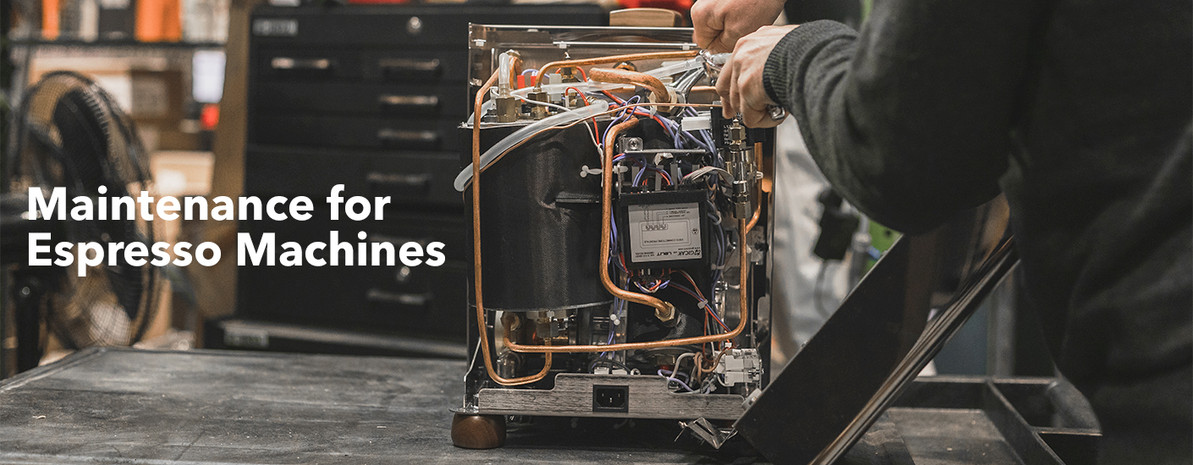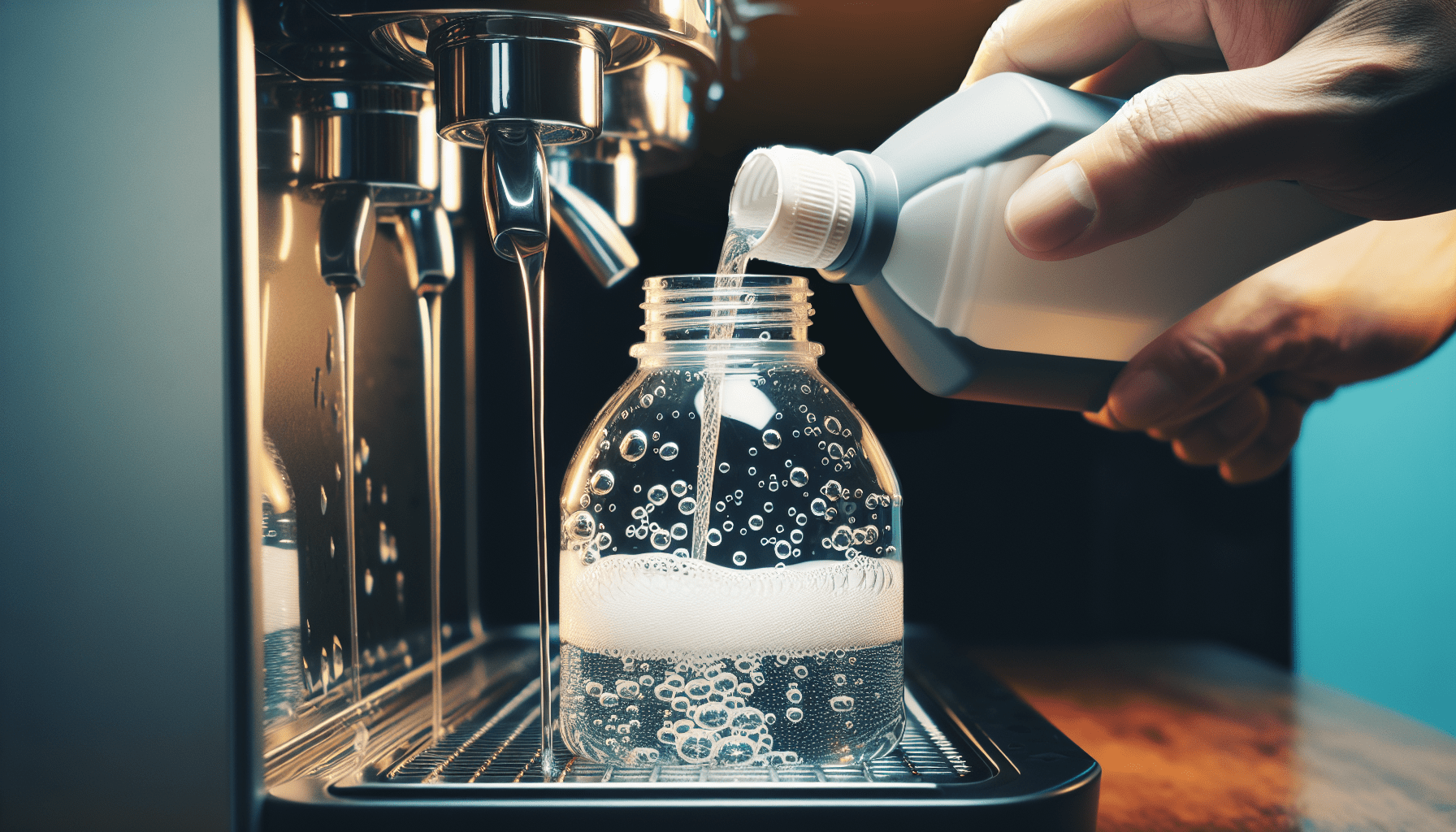Maintaining a super-automatic espresso machine is essential for ensuring a consistently delicious cup of coffee. From cleaning the brew group to descaling the machine, there are several maintenance tasks that you need to perform regularly. In this article, we will explore these essential tasks in detail, providing you with all the information you need to keep your super-automatic espresso machine running smoothly and producing the perfect brew every time. So, let’s dive in and discover the key maintenance steps for your beloved espresso machine.
Cleaning
Keeping your super-automatic espresso machine clean is essential for ensuring that it continues to produce delicious, high-quality coffee. Regular cleaning not only extends the lifespan of your machine but also maintains its performance. There are several cleaning tasks that you should incorporate into your maintenance routine, including daily, weekly, and monthly cleaning.
Daily cleaning
Daily cleaning is the foundation of maintaining a clean and healthy espresso machine. It only takes a few minutes each day to perform these tasks, but the impact on the quality of your coffee can be significant. Start by wiping down the exterior of the machine with a damp cloth to remove any dust or spills.
Next, remove the brew group and rinse it thoroughly with warm water. Use a small brush to scrub away any residual coffee grounds or oils. This will prevent any buildup that can affect the taste and consistency of your espresso.
Remember to clean the drip tray and empty the coffee grounds bin daily. These areas can harbor bacteria and mold if left unattended. Lastly, run a rinse cycle with water to flush out any remaining residue.
Weekly cleaning
In addition to daily cleaning, a deeper clean should be performed on a weekly basis. Start by descaling your espresso machine, which is the process of removing mineral deposits that can accumulate over time. Descale solution can be purchased at most home appliance stores, and it’s important to follow the manufacturer’s instructions for your specific machine.
After descaling, remove the steam wand and soak it in warm, soapy water to remove any milk residue. Scrub it gently with a brush to ensure a thorough clean. Don’t forget to clean the grouphead gasket as well, as it can become clogged with coffee oils.
Monthly cleaning
While daily and weekly cleaning tasks focus on the efficiency and functionality of your super-automatic espresso machine, monthly cleaning is targeted at the overall maintenance and appearance. Start by cleaning the water filter or replacing it if necessary. Water filters are crucial in ensuring that your coffee tastes its best by removing impurities and maintaining a balanced flavor.
Next, inspect the bean hopper for any signs of blockages or moisture. Clean it thoroughly with a dry cloth or brush to remove any residual coffee oils. Don’t forget to adjust the grinder if needed, as this can affect the richness and aroma of your coffee. Lastly, inspect the steam wand for any wear or tear and replace any damaged parts.
Descaling
Descaling your super-automatic espresso machine is essential for maintaining its overall performance and preventing mineral buildup that can affect the taste of your coffee. Understanding the frequency of descaling, the appropriate descale solution to use, and the descaling process will help you keep your machine in optimal condition.
Frequency of descaling
The frequency of descaling your machine depends on the hardness of your water and how often you use your espresso machine. Generally, it is recommended to descale every two to three months. However, if your water has high mineral content, you may need to descale more frequently.
Keep an eye out for signs that your machine needs descaling, such as slower water flow, irregular brew cycles, or a change in the taste of your coffee. Addressing these issues promptly will ensure that your machine continues to produce delicious coffee.
Descale solution
When choosing a descale solution, it’s important to use a product specifically formulated for espresso machines. These solutions are designed to dissolve mineral deposits without damaging any internal components. Always follow the manufacturer’s instructions for your specific machine.
Descaling process
To descale your super-automatic espresso machine, start by preparing the descale solution according to the instructions on the packaging. Empty the water reservoir and fill it with the descale solution. Run the machine through a brew cycle, allowing the solution to pass through all the internal components.
Once the cycle is complete, rinse the water reservoir thoroughly and fill it with clean water. Run several brew cycles with just water to flush out any remaining descale solution. Afterward, your machine will be ready to brew delicious coffee once again.
Water Filter Replacement
Water filters play a crucial role in ensuring that your coffee tastes its best. They remove impurities and maintain a balanced flavor in your brew. Knowing the importance of water filters, how often they should be replaced, and how to replace them properly will help you maintain the quality of your coffee.
Importance of water filters
Water filters are essential for removing chlorine, minerals, and other contaminants that can affect the taste and aroma of your coffee. They also help to prevent scale buildup in your machine, prolonging its lifespan and reducing maintenance requirements. Using filtered water enhances the flavor and overall experience of your espresso.
How often to replace
The frequency of water filter replacement varies depending on the type and model of your super-automatic espresso machine. However, a general guideline is to replace the water filter every two to three months. If you live in an area with hard water, you may need to replace it more frequently.
Keep an eye out for signs that the water filter needs to be replaced, such as a change in the taste of your coffee or slower brewing times. Regularly checking and replacing the water filter will maintain the quality of your coffee and prevent any potential issues caused by clogged filters.
Replacing the water filter
To replace the water filter in your super-automatic espresso machine, start by referring to the manufacturer’s instructions for your specific model. Typically, the water filter is located in the water reservoir. Remove the old water filter and discard it properly.
Prepare the new water filter according to the manufacturer’s instructions, usually by soaking it in water for a few minutes. Insert the new filter into the designated area of the water reservoir, ensuring it is secure and properly positioned.
After replacing the water filter, run a few brewing cycles with just water to flush out any air bubbles or residue. This will ensure that your coffee machine is ready to brew delicious, filtered coffee.
Grouphead Maintenance
The grouphead of your super-automatic espresso machine is responsible for delivering hot water to extract the flavors from your coffee grounds. Proper maintenance of the grouphead is crucial for ensuring optimal performance and the best-tasting espresso. This section will guide you through the process of cleaning the grouphead and replacing the grouphead gaskets.
Cleaning the grouphead
Regularly cleaning the grouphead is essential for maintaining consistent coffee quality. Start by removing the portafilter and wiping the grouphead with a clean, damp cloth to remove any loose coffee grounds or oils. Use a small brush to gently scrub the area, ensuring that all residue is removed.
If there are any stubborn stains or buildup, consider using a grouphead cleaning detergent. Follow the instructions on the detergent packaging to ensure safe and effective cleaning. Rinse the grouphead thoroughly with clean water, ensuring that no detergent residue remains.
Replacing grouphead gaskets
Grouphead gaskets are essential for creating a watertight seal and preventing leaks during the brewing process. Over time, these gaskets can become worn or damaged, affecting the pressure and water flow of your espresso machine. Regularly inspecting and replacing the grouphead gaskets will ensure the longevity and performance of your machine.
To replace the grouphead gaskets, start by referring to the manufacturer’s instructions for your specific espresso machine model. Typically, the gaskets are located within the grouphead assembly. Carefully remove the old gaskets, ensuring that no fragments are left behind.
Clean the grouphead thoroughly to remove any residual coffee grounds or oils. This will aid in the proper installation of the new gaskets. Lubricate the new gaskets with food-grade lubricant, following the manufacturer’s recommendations. Carefully insert the new gaskets into the grouphead assembly, ensuring a snug fit.
Test the machine by running a few brewing cycles to ensure that the new gaskets are properly installed and functioning without any leaks.
Steam Wand Cleaning
The steam wand of your super-automatic espresso machine is responsible for creating the perfect milk froth for cappuccinos, lattes, and other specialty drinks. Regular cleaning of the steam wand is essential for maintaining its performance and preventing any milk residue buildup. This section will guide you through the process of daily steam wand cleaning and deep cleaning.
Daily steam wand cleaning
Daily cleaning of the steam wand is crucial to prevent milk residue from drying and clogging the wand. Immediately after each use, purge the steam wand of any remaining milk by turning on the steam function for a few seconds. This will remove any residual milk and prevent it from sticking inside the wand.
Next, use a damp cloth or sponge to wipe the surface of the steam wand, removing any visible milk residue. Ensure that the cloth or sponge is clean and that all areas of the steam wand are wiped thoroughly.
Deep cleaning the steam wand
Over time, milk residue may accumulate inside the steam wand and become difficult to remove with daily cleaning. Performing a deep cleaning on a regular basis will help maintain the functionality and hygiene of your steam wand.
Start by removing the steam wand from the machine, following the manufacturer’s instructions. Soak the steam wand in warm, soapy water for a few minutes to loosen any dried milk residue. Gently scrub the inside and outside of the wand with a small brush.
After cleaning, rinse the steam wand thoroughly with clean water and dry it completely before reattaching it to the machine. This will ensure that no residual moisture remains, minimizing the risk of mold or bacteria growth.
Bean Hopper Maintenance
The bean hopper of your super-automatic espresso machine stores the coffee beans and feeds them into the grinder. Proper maintenance of the bean hopper is crucial for ensuring consistent coffee quality and preventing any blockages that may affect the machine’s performance. This section will guide you through the process of cleaning the bean hopper and checking for blockages.
Cleaning the bean hopper
Regularly cleaning the bean hopper is essential for removing any residual coffee oils that can accumulate over time. Start by emptying any remaining coffee beans from the hopper. Use a dry cloth or brush to wipe the inside of the hopper, ensuring that no coffee residue remains.
If there are any stubborn stains or oily residue, consider using a mild detergent specifically formulated for coffee-related cleaning. Follow the instructions on the detergent packaging to ensure safe and effective cleaning. Rinse the hopper thoroughly, ensuring that no detergent residue remains.
Checking for blockages
Check the bean hopper and bean chute for any signs of blockages. Over time, coffee beans can become stuck in the chute, preventing a smooth flow into the grinder. Remove any visible blockages with a small brush or by tapping the hopper gently.
Regularly inspecting and clearing blockages will help ensure consistent grinding and prevent any unnecessary strain on the machine’s internal components. Clearing blockages promptly will minimize the risk of damaged parts and potential interruptions in your coffee brewing process.
Grinder Adjustment
The grinder in your super-automatic espresso machine plays a crucial role in determining the fineness of the coffee grounds and, consequently, the taste and aroma of your espresso. Understanding the importance of grinder adjustment and knowing how to adjust it properly will allow you to achieve the perfect grind for your preferred brewing method.
Importance of grinder adjustment
Grinder adjustment is essential for achieving the desired extraction and ensuring that the flavor and aroma of your coffee are optimal. Different brewing methods require different grind sizes, and adjusting the grinder allows you to finely tune the extraction process.
A grinder set too fine can result in over-extraction, leading to bitter and over-extracted coffee. On the other hand, a grinder set too coarse can result in under-extraction, leading to weak and sour coffee. Finding the right grind size for your preferred brewing method is crucial for a balanced and flavorful cup of coffee.
How to adjust the grinder
To adjust the grinder, refer to the manufacturer’s instructions for your specific machine. Most super-automatic espresso machines have a dial or knob that can be rotated to adjust the grind size. Start by turning the dial or knob to the coarsest setting and gradually make finer adjustments as needed.
Ensure that the grinder is running while making adjustments to prevent any residual coffee grounds from becoming trapped and affecting the accuracy of the adjustment. It’s recommended to test the grind size by brewing a small amount of coffee and adjusting further if necessary.
Remember to clean the grinder regularly to prevent any buildup of coffee oils and particles, as this can affect the accuracy of the grind and the taste of your coffee.
Milk Frother Maintenance
The milk frother of your super-automatic espresso machine is essential for creating the perfect foam for your cappuccinos and lattes. Proper maintenance of the milk frother is crucial for ensuring optimal performance and preventing any milk residue buildup that can affect the taste and hygiene. This section will guide you through the process of cleaning the milk frother and replacing any necessary parts.
Cleaning the milk frother
Regularly cleaning the milk frother is essential for preventing milk residue from drying and clogging the frother. Immediately after each use, purge the frother by turning on the steam function for a few seconds. This will remove any remaining milk from the frother.
Next, detach the frother from the machine, following the manufacturer’s instructions. Rinse the frother thoroughly with warm, soapy water, ensuring that all parts are cleaned, including the frothing wand and any attachments. Gently scrub any stubborn milk residue using a small brush.
After cleaning, rinse the frother with clean water to remove any soapy residue. Allow it to dry completely before reattaching it to the espresso machine. Proper drying prevents any moisture buildup that may lead to mold or bacteria growth.
Replacing milk frother parts
Over time, certain parts of the milk frother may wear out or become damaged and require replacement. Common parts that may need replacement include the frothing wand, seals, or O-rings. Regularly inspecting and replacing these parts will ensure optimal milk frothing performance.
To replace milk frother parts, refer to the manufacturer’s instructions for your specific model. Typically, these parts can be purchased from the manufacturer or authorized retailers. Carefully remove the old parts, ensuring that no fragments are left behind.
Clean the designated areas thoroughly before installing the new parts. Lubricate any rubber or silicone seals with food-grade lubricant, following the manufacturer’s recommendations. Carefully install the new parts, ensuring a proper fit and seal.
Test the functionality of the milk frother by using the steam function with water before frothing milk. This ensures that the replacement parts are properly installed and functioning without any leaks.
General Inspections
Regularly inspecting your super-automatic espresso machine for leaks and ensuring proper functionality is essential for catching potential issues early and preventing any further damage. This section will guide you through the process of checking for leaks and ensuring that your machine is operating as expected.
Checking for leaks
Inspect your super-automatic espresso machine regularly for any signs of leaks. Check the water reservoir, hoses, drip tray, and steam wand for any signs of water or coffee residue. If you spot any leaks, address them promptly to prevent further damage and water wastage.
Inspect the grouphead and portafilter for any leaks during the brewing process. If you notice water or coffee flowing from areas other than the designated outlets, check that the grouphead gaskets are properly installed and that the portafilter is securely locked into position.
Ensuring proper functionality
In addition to checking for leaks, it’s important to ensure that your super-automatic espresso machine is operating as expected. Check the buttons, knobs, and digital displays to ensure that they are all functional. Test the different brewing functions, water dispensing, and steam wand to verify that they are performing correctly.
If you notice any irregularities or malfunctions, consult the manufacturer’s instructions or contact their customer support for guidance. Addressing any performance issues early can prevent further damage and help maintain the longevity of your machine.
Professional Maintenance
While regular cleaning and maintenance are crucial for preserving the performance and quality of your super-automatic espresso machine, it’s recommended to schedule professional servicing and expert repairs on a regular basis. Professional maintenance ensures that your machine receives comprehensive care and resolves any technical issues that may be beyond your scope of knowledge.
Regular servicing
Professional servicing involves a thorough inspection and cleaning of your espresso machine by certified technicians. This includes disassembling the machine, cleaning and descaling internal components, checking for any worn-out or malfunctioning parts, and making any necessary adjustments or replacements. Regular servicing can help prevent future breakdowns and prolong the lifespan of your machine.
It’s recommended to consult the manufacturer’s guidelines for the recommended frequency of professional servicing for your specific machine. Professional servicing intervals can range from every six months to once a year, depending on usage and the manufacturer’s recommendations.
Expert repairs
In the event that your super-automatic espresso machine requires repairs, it’s best to consult professional technicians who specialize in espresso machine repairs. Attempting to fix complex technical issues yourself may lead to further damage and void the warranty.
When encountering any problems with your machine, contact the manufacturer’s customer support or find a reputable espresso machine repair service in your area. Professional technicians have the knowledge and expertise to diagnose and repair any issues, ensuring that your machine is back up and running at its optimal performance.
By following a comprehensive routine of cleaning, descaling, water filter replacement, grouphead maintenance, steam wand cleaning, bean hopper maintenance, grinder adjustment, milk frother maintenance, general inspections, and scheduling regular professional maintenance, you can ensure that your super-automatic espresso machine delivers the best-tasting coffee consistently. Taking the time to care for your machine will not only prolong its lifespan but also guarantee a delightful coffee experience every time. Happy brewing!




